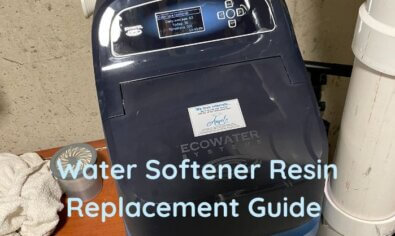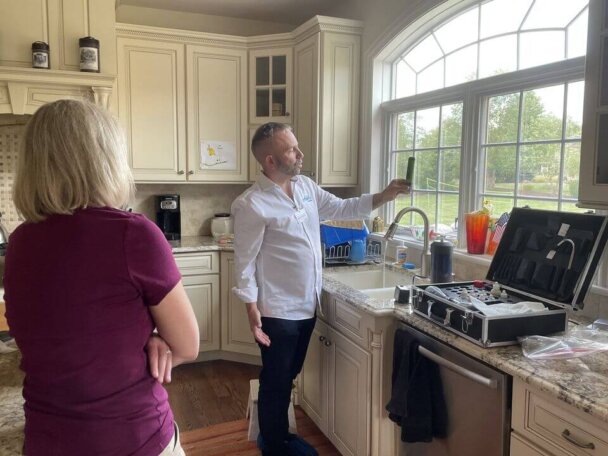How Residents Were Exposed To Lead In Chicago’s Drinking Water
In this blog, you will learn about the lead contamination problem in Chicago, including:
Chicago had an antiquated pipe system that created a lead problem after renovations.
The resulting lead poisoning carries severe health risks, including brain damage.
This situation happened due to how expensive replacing the pipes would be and the political fallout it would create.
A class-action lawsuit is currently in place, alleging that city officials knew about the lead problem and continued to contaminate the drinking water.
As of 2019, water meter installations have also been paused after discovering they contribute to the lead contamination problem.
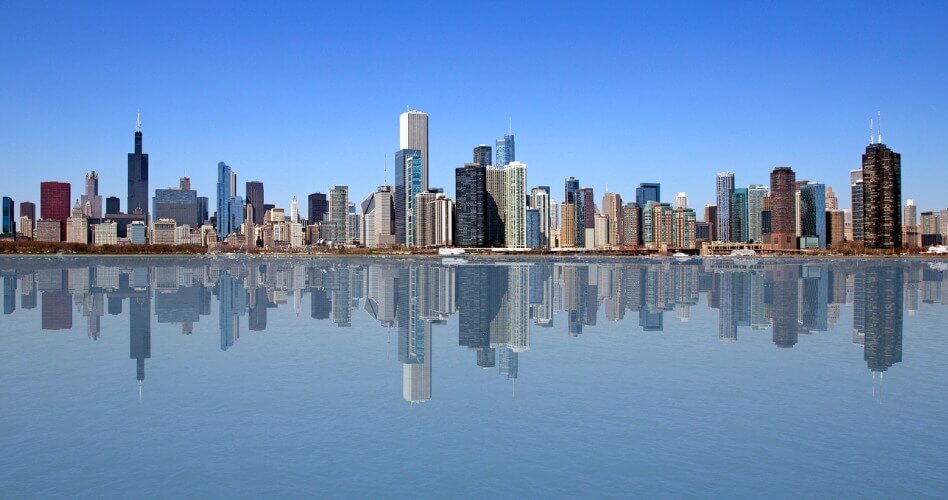
Here’s What You Need to Know About Lead in Chicago’s Drinking Water
What do you think of when you hear the phrase lead poisoning? Perhaps you associate it with lead paint or remember its role in the water crisis in Flint, Michigan. But did you know there is a serious threat of lead poisoning right here in Chicagoland?
The truth is Chicago has alarmingly high amounts of lead in its drinking water. It’s a problem that has persisted for years and has impacted many Chicago residents’ health and safety.
The outcry over Flint’s lead crisis has spurred nationwide scrutiny as outraged citizens pressure officials to step up testing. As a result, the EPA launched an overhaul of its standards and testing structures. Nevertheless, many municipalities continue to deny the severity of the problem.
And in the last few years, it has come to light that Chicago officials have long been making the problem worse through renovation projects.
How is there lead in Chicago’s drinking water? And how can you fight against the dangerous toxin in your drinking water? Read on to find out!
How Did Lead Get into Chicago’s Drinking Water?
To understand the problem of lead in our tap water, you first need to know how it gets there.
Unlike some other toxins, lead doesn’t occur naturally in water. Instead, when Chicago water leaves the treatment plant, it’s usually lead-free.
So, where does the lead come from? The answer is the pipes that bring water to our homes.
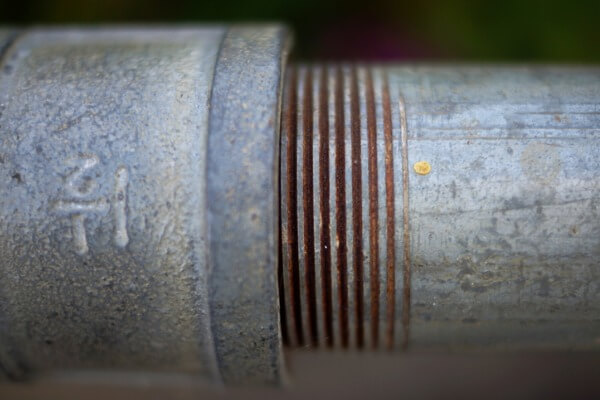
Lead in Pipes
It used to be the norm for lead pipes to be used in municipal plumbing throughout the country. It was valued as a more convenient way to run waterlines to houses.
After the dangers of lead poisoning became widely known, the League of Nations recommended that all countries ban lead paint and piping.
However, it took the U.S. government close to 80 years to end its use. This was due to robust lobbying efforts by the lead industry. Lead was even mandated to be used in low-income housing projects.
Chicago’s Pipeline System
Chicago, however, was unique among U.S. cities. While other cities like New York had already banned lead decades earlier, it took the federal government banning lead pipes in 1986 for Chicago to stop.
The bans only restricted lead in new construction, but they didn’t require the removal or replacement of existing lead paint and plumbing. Therefore, lead that built up before the ban still remains in systems throughout the country.
In Chicago, the Department of Water Management says that almost 80 percent of all properties are connected to street mains via lead service lines.
The lead in these pipes leaches into the water, contaminating it as it moves through the pipes. So, if you don’t have a water filtration system, it pours right out of your faucet and into your glass.
How exactly does lead leach into the water supply? There are a few factors at play here.
Construction and renovation work, such as water main replacements and meter installations, can disturb service lines. As a result, the anti-corrosive linings on the pipes fail, allowing lead and other matter into the water.
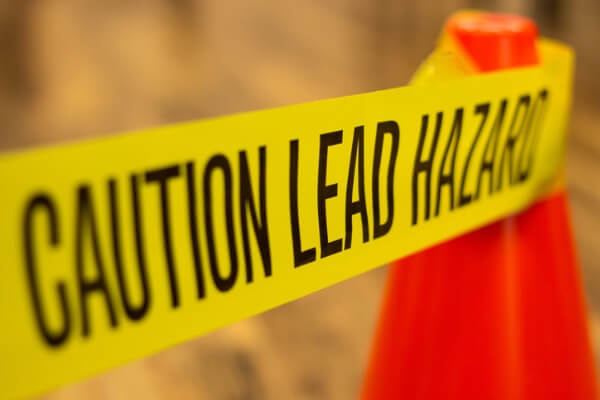
What Are the Health Risks of Lead Poisoning?
The lead in Chicago’s water carries severely harmful health risks. Some of the health consequences of lead poisoning are:
- Coma
- Convulsions
- Intellectual and developmental disabilities in children
- Behavioral disorders in children
- Anemia
- Hypertension
- Renal impairment
- Immunotoxicity and toxicity to reproductive organs
According to the World Health Organization, the neurological and behavioral effects of lead poisoning are, at the moment, irreversible.
Angel Water Now Offers Free Water Tests!
Don’t Guess, Test! Get Your Free Water Test Now and Take Control of Your Water Quality.
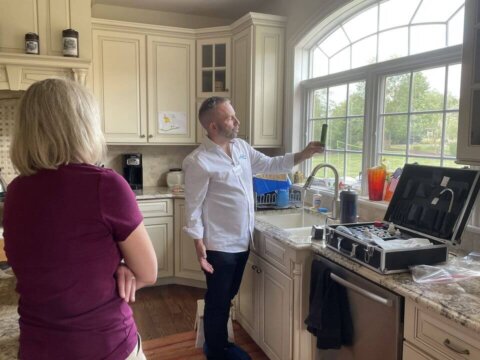
Why Are You Hearing About This Now?
So why haven’t you heard about this until recently? Here a few reasons why this has only come up in the past couple of years:
Removing Lead is Expensive
Replacing aging water infrastructure is a particularly expensive undertaking, especially if a municipality is as strapped for cash as Chicago.
In fact, one only needs to look at Galesburg, IL, to see the cost. As one of the cities that exceeds the EPA’s lead standards, it is spending $10 million to replace its water systems. Now imagine the entire city of Chicago replacing its water system and how expensive it can be.
Politicians Don’t Want to Report It
Having to tell citizens that their water is tainted with lead is also bad political optics that any city would want to avoid. As such, there are many allowances made to give cities leeway and help them avoid doing so.
For example, local officials aren’t usually required to notify homeowners or take any sort of action unless lead levels exceed legal limits for a full testing cycle.
What are the legal limits? The EPA currently sets its standards at no more than 15 parts-per-billion of lead in drinking water.
And a full testing cycle could be up to three years. So, your water can violate federal standards for years before officials even have to disclose that fact. And it won’t come up in the annual report either until the testing is complete.
What is the Current Situation?
So, since we do know about lead in Chicago’s pipes and drinking water, what’s being done about it?
A class-action lawsuit was filed in 2016 against the city of Chicago. It alleges that the city has been knowingly contaminating the water supply for years and not telling residents about it.
Remember that part about construction and renovation work contaminating the service lines? That’s what was happening in Chicago. Special precautions need to be put into place to prevent this. Instead, the lawsuit alleges, repair projects were rushed through, and as a result, the EPA found that homes citywide saw elevated levels in their water.
As of 2019, Chicago Mayor Lori Lightfoot also put a stop to the installation of water meters in Chicago homes after elevated levels of lead were found.
She has encouraged Chicago residents to get their water tested. However, less than 30 percent of Chicago residents who asked for test kits received them.

How Do You Prevent Lead Contamination in Your Water?
Testing your water regularly keeps you informed about the quality of your water. But how do you prevent contaminants from entering your drinking water?
A high-quality, NSF certified water filter is the best way to remove contaminants like lead. Water filters and reverse osmosis systems act as a blockade for contaminants between your pipes and your faucet.
Do You Want Cleaner Water?
Knowing all of this, you might be thinking twice about drinking water straight from your tap. To protect yourself and ensure healthier and cleaner water for you and your family, try Angel Water’s Zero Multi-Stage RO Countertop water filter!
The Zero Countertop helps defend you against toxins in Chicago’s drinking water, including lead contamination!
We understand that nothing is more important than ensuring the safety of your family, and we’re always here to help! If you want to learn more, stop by or give us a call at (847) 382-7800!
Editor’s Note: This blog was originally published on May 26, 2016 and has been updated.
Interested in a Water Softener System for Your Home?
You don’t have to live with a dry, itchy scalp and brittle hair anymore! It would be our pleasure to help you find the right water softener to make your showers enjoyable again.
Please give us a call at (847) 382-7800 or visit our water softener page to learn more.


